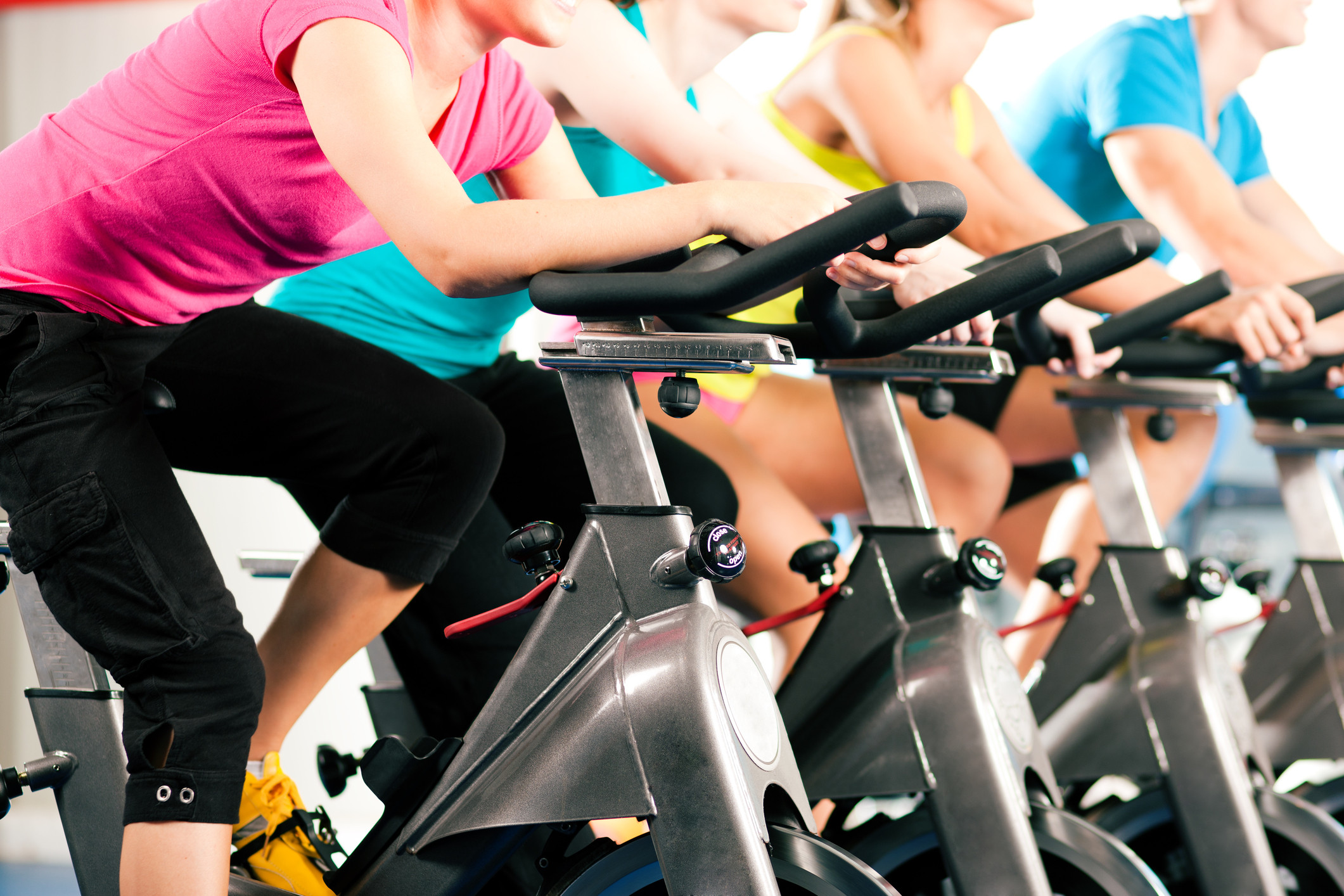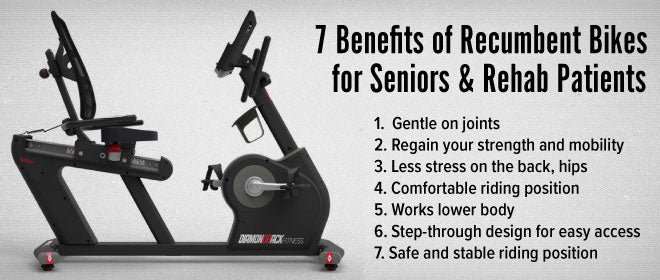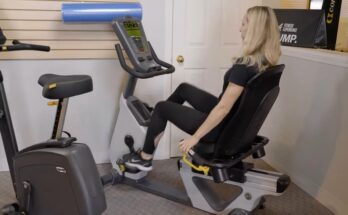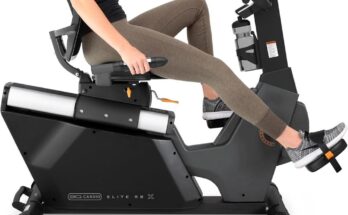Recumbent bikes are generally suitable for individuals with bad knees. They offer a low-impact workout that reduces stress on the knee joints.
If you suffer from knee pain or are recovering from an injury, maintaining an active lifestyle can be challenging. That’s where recumbent bikes come into play, with their design that promotes cardiovascular fitness without the high-impact strain that comes with traditional upright bikes.
Their unique configuration allows you to sit back in a reclined position, distributing your weight evenly and reducing the pressure on your knees and back. This ensures that your joints are protected while still allowing you to engage in effective aerobic exercise. Recumbent bikes also help in strengthening the muscles around the knees, potentially improving joint stability and overall leg strength. Whether you’re dealing with chronic knee issues or simply looking for a more comfortable exercise option, recumbent bikes are definitely worth considering.
The Appeal Of Recumbent Bikes
Recumbent bikes stand out in the fitness world. These bikes offer a unique cycling experience, different from upright bikes. They are known for their comfort and support. Many people with bad knees find these bikes helpful. Let’s explore the reasons why.
Comfort And Ergonomics
Recumbent bikes are a boon for knee health. Their design supports the back and reduces stress on the knees. The seating position is natural and relaxed. It distributes weight evenly across the back and buttocks.
- Larger seat for comfort
- Backrest to ease strain
- Adjustable settings for a perfect fit
Aerodynamic Benefits
The shape of recumbent bikes offers an aerodynamic edge. Riders can go faster with less effort. This means longer workouts without extra strain on the knees.
- Lower wind resistance
- Energy-efficient design
- Smooth motion for gentle knee movement
Bad Knees: A Common Concern
Bad knees are a widespread issue, impacting people of various ages and lifestyles. Whether due to aging, injury, or chronic conditions, knee problems can significantly limit mobility and quality of life. Finding suitable exercises to maintain fitness without exacerbating pain is crucial for those affected.
Causes Of Knee Pain
Knee discomfort arises from a multitude of sources. It’s important to understand the root causes to better manage the condition. Common culprits include:
- Arthritis: Degenerative conditions causing joint inflammation and pain.
- Injury: Ligament tears, sprains, and fractures can lead to lasting knee pain.
- Overuse: Repetitive motions in sports or occupations contribute to strain.
Impact Of Exercise On Knee Health
Exercise plays a pivotal role in managing knee problems. Proper physical activity can aid in:
- Strengthening muscles around the knee, providing better support.
- Enhancing joint flexibility and range of motion.
- Reducing overall pain and improving joint function.
A recumbent bike provides a low-impact form of exercise that can be ideal for those managing knee pain. The reclined seating position eases stress on the knees, while the pedaling motion helps in strengthening the muscles without excessive strain.
Comparing Upright And Recumbent Bikes
Choosing the right bike can be crucial for those with knee issues. Let’s dive into the differences between upright and recumbent bikes. Understanding their impact on the knees could help in choosing a suitable option.
Stress Distribution On Joints
Recumbent bikes provide a significant advantage for individuals with knee pain. The seated position reduces stress on the joints. In contrast, upright bikes position the body above the pedals. This can increase pressure on the knees. Recumbent bikes distribute weight more evenly. This ensures a smoother cycling experience and decreases joint stress significantly.
| Upright Bikes | Recumbent Bikes | |
|---|---|---|
| Body Position | Above the pedals | Reclined, even weight distribution |
| Knee Stress | Higher due to body weight | Lower due to reclined posture |
Posture And Pedaling Mechanics
When it comes to posture, recumbent bikes shine. The rider’s back is supported by a large seat. It promotes a relaxed, natural spinal position. Upright bikes require riders to hold onto the handles. This can lead to a hunched posture. For pedaling, recumbent bikes allow legs to push forward. This movement is more natural and gentle on the knees.
- Recumbent bikes support the lower back effectively.
- They encourage a natural leg movement during pedaling.
- Upright bikes may lead to hunching and increased knee pressure.
Recumbent bikes offer a comfortable and safer option for bad knees. They promote good posture and reduce stress on joints. It’s crucial to choose a bike that supports knee health. Recumbent bikes could be a fitting choice.
Recumbent Bikes: The Gentle Option For Recovery
For anyone facing the challenge of bad knees, recumbent bikes offer a safe and effective way to stay fit. They are designed to minimize strain making them a go-to choice for knee recovery. Let’s explore how these bikes can help.
Reduced Load On The Knees
The design of a recumbent bike allows your legs to push forward rather than downward. This means there is less pressure on your knees while you pedal. The smooth motion prevents jarring impacts, ideal for those with knee issues.
- Less weight on knee joints
- Pushing horizontally eases strain
- Smooth pedaling prevents jarring
Support For Back And Hips
Recumbent bikes provide a comfortable seat with full back support. This ergonomic feature aligns the spine and reduces stress on the back and hips.
| Area | Support Offered |
|---|---|
| Back | Spine alignment |
| Hips | Reduced hip strain |
This support ensures a controlled workout for those with bad knees. By maintaining proper posture, you can prevent new injuries and assist your knee’s recovery process.
Incorporating Recumbent Bikes Into A Healing Regimen
People with bad knees often face limitations when it comes to exercise. Enter recumbent bikes: a game-changer for gentle rehabilitation. They offer a comfortable sitting position, which eases the strain on joints. This makes them a top choice for knee recovery programs. Doctors and physiotherapists highly recommend these bikes.
Starting With Low Resistance
It’s crucial to begin at a pace that’s kind to your knees. Low resistance settings are the secret to using recumbent bikes without hurting your joints. Here’s how to do it right:
- Choose the lowest resistance to start.
- Focus on smooth pedal strokes.
- Maintain a steady, slow speed.
As your knees get stronger, you can gradually increase resistance. Always pay attention to how your knees feel. If there’s pain, lower the resistance.
Monitoring Progress And Pain
Keep track of your recovery journey. Monitoring progress helps you understand how your knees respond to exercise. Here’s what to note:
- Exercise duration.
- Resistance levels.
- Any pain during or after workouts.
Use a diary or an app to record details after each session. This data shows if you’re pushing too hard or if you can handle more. Remember, no pain means no strain on your healing knees.
:max_bytes(150000):strip_icc()/Health-GettyImages-1488956789-accc05d0a0b84bb0bed1455df1cd9215.jpg)
Credit: www.health.com
Expert Opinions On Recumbent Biking With Knee Issues
Welcome to our deep dive into the benefits of recumbent biking for individuals with knee issues. Expert opinions play a crucial role in guiding us towards the most knee-friendly exercises. We explore what professionals say about recumbent biking for bad knees.
Physical Therapists’ Recommendations
Physical therapists often recommend recumbent bikes for those with knee pain. Here’s why:
- Reduced Stress on Knees: The seating position minimizes the load on the joints.
- Better Alignment: The design helps keep the knee aligned during the pedal stroke.
- Controlled Movement: Users can easily adjust the pedal resistance and speed.
They suggest a gradual start with low resistance, focusing on smooth pedaling motions.
Orthopedic Surgeons’ Advice
Orthopedic surgeons view recumbent bikes as a safe option for knee rehabilitation. Key points include:
- Post-Surgery Recovery: It aids recovery without overloading the knee.
- Non-Impact Exercise: There is no harsh impact as with running or jumping.
- Customizable Workout: Surgeons suggest setting the seat to fully extend the leg without locking the knee.
They stress the importance of listening to one’s body and avoiding pain during exercise.
Real Stories: The Impact Of Recumbent Biking On Knee Recovery
Exploring the journey of knee recovery often leads to the discovery of recumbent biking. Real stories shed light on its impact. Patients with bad knees have found hope and healing behind the handlebars of these low-impact exercise machines.
Success Stories
Countless individuals have shared how recumbent bikes changed their lives. One such tale comes from a retired teacher:
“Six months post-surgery, and I’m biking 10 miles a day!”.
Before her knee replacement, cycling was a dream. Now, it’s her daily routine. Another user, a former athlete, swears by his recumbent bike:
- No more pain while pedaling.
- Strengthened muscles around the knees.
- Increased mobility and flexibility.
Limitations And Considerations
Recumbent biking is not a one-size-fits-all solution. Certain limitations and considerations must be kept in mind.
| Consideration | Detail |
|---|---|
| Alignment | Correct posture is crucial. Adjust the seat to avoid strain. |
| Resistance | Start with low resistance. Build up gradually to protect the knees. |
| Frequency | Consistency is key. Aim for regular, short sessions. |
Consult a doctor before starting any new exercise regimen, especially if you’re recovering from an injury or surgery.

Credit: www.health.harvard.edu

Credit: creakyjoints.org
Frequently Asked Questions On Is Recumbent Bike Ok For Bad Knees?
Can Recumbent Bikes Reduce Knee Strain?
Recumbent bikes can indeed reduce knee strain due to their design. Their seated position with back support and front-pedal layout facilitate a more natural leg movement. This minimizes pressure on the knees compared to upright bikes, which is beneficial for rehabilitation or those with joint issues.
Is Cycling Good For Knee Pain Rehabilitation?
Cycling, particularly on a recumbent bike, is excellent for knee pain rehabilitation. It offers a low-impact cardiovascular workout that helps improve joint mobility and strength without exacerbating knee pain. Always consult with a healthcare professional before starting any new exercise regimen.
What Makes Recumbent Bikes Preferred For Joint Conditions?
Recumbent bikes are preferred for joint conditions due to their ergonomic design. They support the back and evenly distribute weight, lessening the impact on the joints. Also, the pedal position in front reduces the hip and knee flexion required, making it easier on the knees.
Are Recumbent Bikes Suitable For All Fitness Levels?
Yes, recumbent bikes are suitable for all fitness levels. They provide adjustable resistance and support, catering to beginners and seasoned athletes alike. Their comfort and reduced risk of injury make them a versatile option for anyone looking to maintain or improve their fitness.
Conclusion
Navigating knee pain doesn’t mean giving up on fitness. Recumbent bikes emerge as a viable option, providing a low-impact, stable workout that favors joint health. Embracing this exercise can lead to stronger muscles, improved mobility, and pain relief. Explore a recumbent bike routine and pedal your way to better knee function.
Always consult with a healthcare professional for tailored advice.



